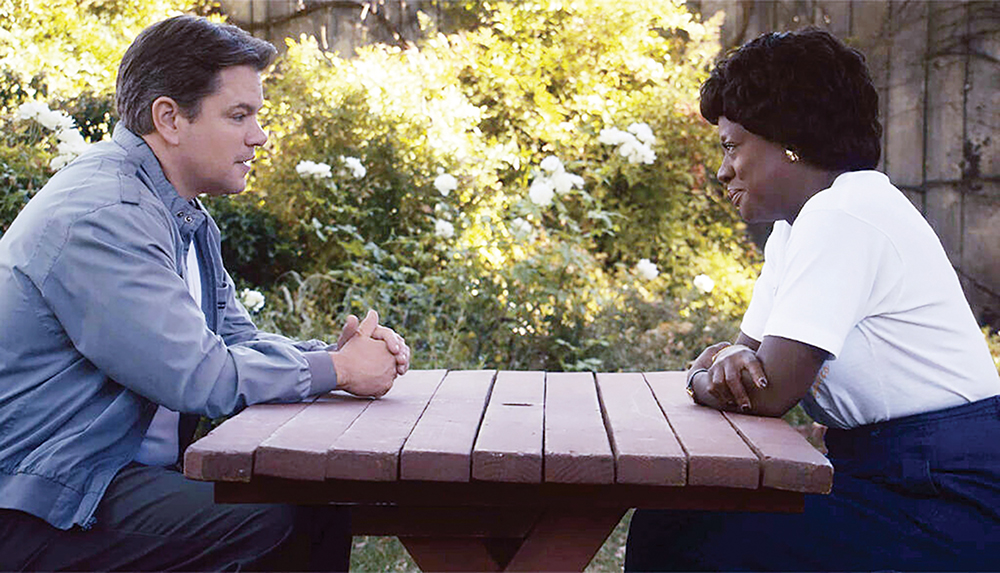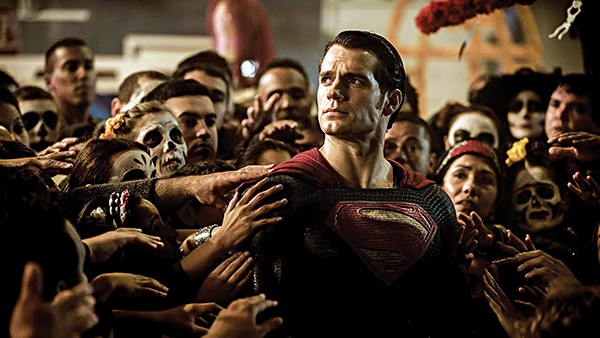It’s newsworthy that Ben Affleck and Matt Damon are once again making movies together in 2023. The duo first burst onto the scene in 1998, when their script for Good Will Hunting won the Oscar for Best Original Screenplay, and also saw Robin Williams earn a Best Supporting Actor trophy. Fast-forward 25 years, and the duo is back with their new film, Air. Unlike Good Will Hunting’s coming-of-age plot, Air is a true story: the history of Nike footwear.
Air begins in 1984 when shoe companies Adidas, Nike, and Converse are battling for market share. The three firms are fighting, with varying levels of success, to catch famous athletes’ attention — especially in the NBA, where Michael Jordan is a rising star. Jordan has a clear interest in Adidas and a sponsorship from Converse; Nike, with its 17 percent market share, is an afterthought.
Basketball scout Sonny Vaccaro (Damon) sets out to make Nike a force to be reckoned with. Vaccaro goes way beyond his jurisdiction to create the Air Jordan, the now-legendary sneaker that catapulted Nike to the top table. Although Vaccaro’s risks lead to eventual success, many of the hurdles he encounters threaten the company’s stability and reputation. But in the end, Vaccaro created a new paradigm for celebrity endorsement.
Damon is only one of many familiar faces in Air, along with Chris Tucker, Jason Bateman, Marlon Wayans, and Viola Davis. As a director, Affleck uses each actor’s individual styles to evoke the very real people they’re portraying. One example is Viola Davis’ portrayal of Deloris Jordan, Michael Jordan’s mom. Making most of the decisions for him during that time, Michael Jordan’s parents were pivotal figures who negotiated contracts and dealt with the media. Davis’ firm motherly hand and emotional balance makes you believe Michael Jordan is her actual son. Similarly, Chris Tucker’s portrayal of Nike executive Howard White leverages Tucker’s comedic chops during tense scenarios, while also sincerely conveying the loyalty White had for Vaccaro and Nike.
From the start of the film, Affleck takes the viewer back to the ’80s, with clips of Mr. T and popular infomercials; ’80s hits like Cyndi Lauper’s “Time After Time” soundtrack long drives. Even Affleck’s camera shots look like they came from ’80s films, like the repeated extreme close-ups of Sonny’s face. The bright wardrobe colors worn by Damon made this Gen-Zer run to my grandfather’s closet to find his Members Only jacket.
There’s one thing about the cast list that stands out: Michael Jordan, the man himself, is not in the film. Really? You had a $60-$70 million dollar budget, and you don’t even have a cameo of Michael Jordan? But Air is all the better without him. We get to know Vaccaro as a risk-taking go-getter, although he makes everyone around him anxious. Other minor characters like Rob Strasser (Jason Bateman) are given opportunities to shine, especially through Strasser’s arc about his daughter and the risks he wasn’t able to take. Add in Michael Jordan and Air becomes all about him. The movie’s message about taking risks and the qualities that made it special would be overshadowed by the presence of the superstar.
The messages of this movie can be encompassed in one quote which keeps getting repeated: “A shoe is just a shoe until someone puts their foot in it.” This story was just an idea until Affleck and Damon got their hands on it — and made it something special.
Air
Now playing
Multiple locations





